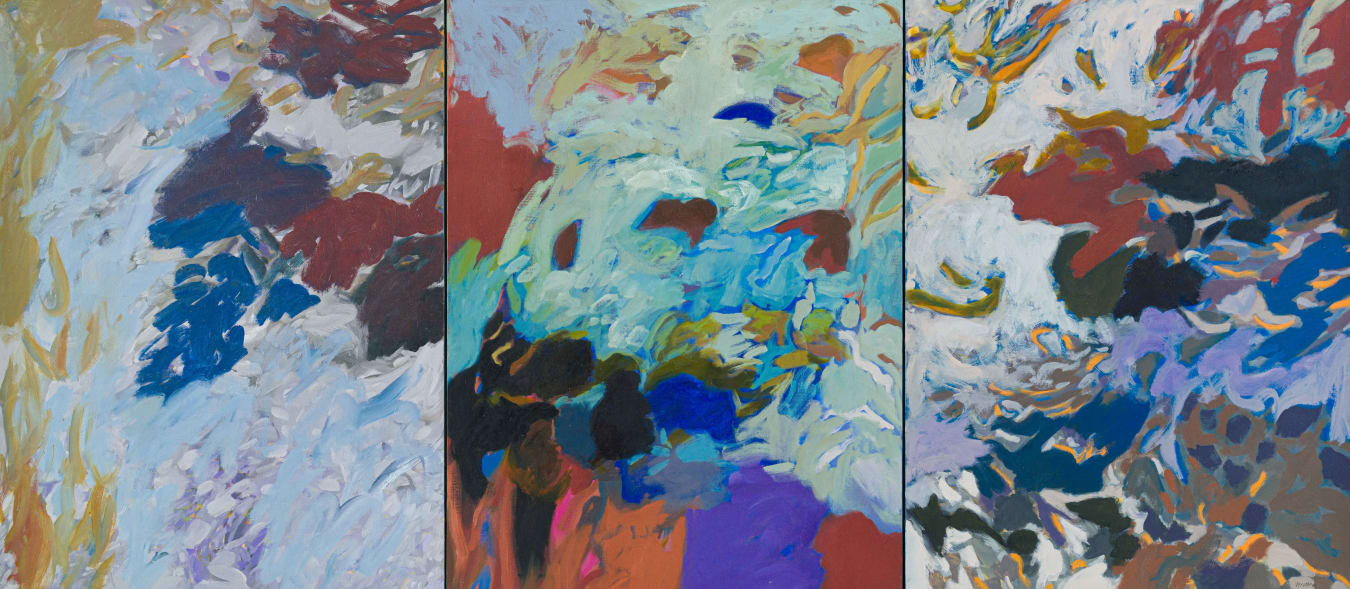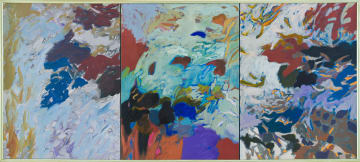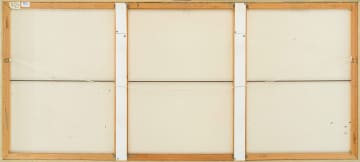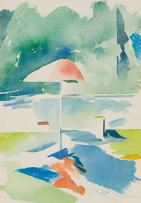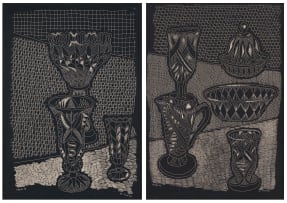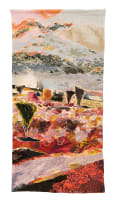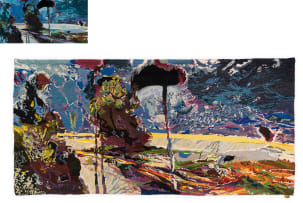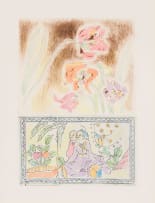Abstract Composition (Paradise Series), polyptych
Andrew Verster
About the SessionStrauss & Co is delighted to present Andrew Verster: Gorgeous and Free, a landmark timed-online auction devoted exclusively to the celebrated Durban painter, educator, critic, and activist Andrew Verster. This collection serves as a focused snapshot of a prolific career, offering new generations an opportunity to engage with an artist who was a prominent figure in the 1980s. It is a chance to explore a body of work that is deeply compelling and a tribute to the legacy of an artist of such significant contributions.
The 38 lots on offer span the full breadth of Verster's creative output. We are thrilled to present a comprehensive selection that includes his characteristic oil paintings, watercolours, a captivating sculptural door piece, and five monumental tapestries created in collaboration with Stephens Tapestry Studio. Each piece reflects a singular visual language, rich with a distinctive chromatic exuberance and an unapologetic vision.
Leading this outstanding collection is Expulsion, a four-panel tour de force from 1987. This powerful artwork, with its vividly coloured wilderness and hunched male figures, revisits the biblical expulsion from Eden, reinterpreting the narrative through the lens of queer desire. This was a profoundly courageous and dignifying gesture in apartheid South Africa. The aesthetic beauty of Verster’s work often belies the quiet but fearless political messages embedded within, demonstrating how he navigated an oppressive social landscape with subtlety and strength. His bold use of colour and intimate scenes also show a clear debt to painters like David Hockney.
This auction reaffirms Verster’s vital place within a lineage of queer South African painters, including Edward Wolfe and Alexis Preller. This catalogue delves deeper into his body of work and his place in art history, solidifying our commitment to championing significant South African artists.
Incl. Buyer's Premium & VAT
About this Item
signed and dated 86
Provenance
Estate Late J Jaakke.
Private Collection.
Notes
Gone are the depictions of expansive empty golden beaches with the occasional deck chair, beach umbrella, and body builder flexing his muscles; now, only a vast sea of swirling colour: Andrew Verster’s Abstract Composition. Three panels spliced together to form a seemingly disjunct whole again. Says Verster, “In the past, I used photographs, this time [when painting the Paradise series] I started from crayon drawings. My starting points are just marks, like Japanese calligraphies. I worked on different canvases for about five months, some small, others larger, just building up the surface into areas of colour. I kept working and only when the surface becomes interesting and the images emerge, do I put the different canvases together.”
Inspired by the colours of French fauvist Henri Matisse, Verster writes to a friend from Paris while visiting the city in 1985, just before the present lot was painted after returning to South Africa: “The Pompidou was just around the corner (from where I stayed) and I wandered around looking at everything and discovered that the artists I really liked, were Bonnard, Matisse and Picasso. But particularly Matisse. Fine. So, I’d discovered Matisse, but what next? Again, I could hear myself talking to a student: copy him! Off I went and bought a book on Matisse. I began copying from the colour plates and the bigger pictures in the front of the book. It was strange learning to paint all over again in a completely new way, literally imitating his way of seeing.”
What did Verster see in his Abstract Composition? Not an empty beach due to racial segregation at the height of apartheid in the 1980s. Not discrimination based on one’s sexual orientation, desiring muscular male bodies, but a new paradisial future for South Africa. Says Carol Becker: “Verster was not painting South Africa’s violent present, but its glorious future.”
Verster’s Abstract Composition essentially obviated traditional hierarchies. Granted, some colours are brighter than others, and some forms larger than others, but the work lacks perspectival space: it doesn’t have a focal point. The result: a ‘democratic’ whole. No one of the three panels is more important than the others, and no individual part of any panel supersedes the rest of it. Verster’s combination of glowing colour and democratic structure inadvertently becomes metaphorical: a strong, not a fragile paradise indeed.
